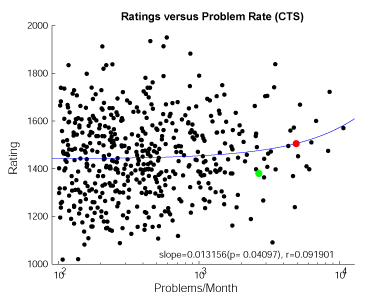Freedom versus security
 In my previous post I described the three main components of piece activity (mobility, freedom, and coordination). While there are some minor points I will add to the final version, it seems to hold up to a second-look.
In my previous post I described the three main components of piece activity (mobility, freedom, and coordination). While there are some minor points I will add to the final version, it seems to hold up to a second-look.Making the dimensions of activity explicit, especially the 'freedom' dimension, has helped me get a better grasp on certain positions (roughly, a piece's freedom is the number of squares to which a it can move while still carrying out its important defensive roles). This concept of freedom can subsume a lot of seemingly disparate ideas under its heading. Here are some examples:
1. Overloaded piece. A piece is not all that free if it is defending against one threat, but when it has to defend more than one threat, its freedom is especially curtailed, often being reduced to zero.
2. The knight/knight lock. Many people like to put two knights so they are defending each other. This is a solid formation, but at the same time it limits the freedom of each knight. This was first pointed out to me in Josh Waitzkin's lectures provided with Chessmaster.
3. Pawn chains. While pawn chains are solid defensively (except at the base, and except for the fact that they can create a weak color complex), the pawns in the chain are giving up some freedom for this strength. Move one pawn and the enemy is given undefended pawns.
4. Pinned pieces. This was in the original post, but I find it a very useful way to think of why, exactly, pinned pieces are bad. It has spurred me to work hard to break pins whenever reasonably possible, rather than wait until it is necessary to do so.
5. Winning won games. They say, when you are ahead in material, to play defensively (i.e., safely), avoiding blunders until you simplify down to a won endgame. There is a tradeoff between safety and security, and when way ahead, this means it might be a good idea to sacrifice some freedom, stay in a secure formation (e.g., knights defending each other), and trade down when possible.
What this exercise has taught me, besides what piece activity is (before I ran all three activity subfactors together into an ambiguous pile, which hindered my ability to explicitly evaluate a position), is how useful word-based explanations can be. While examples are nice, and crucial, having them fit into a framework helps sort them into memory in ways that are more likely to stick. I think most of us have noticed this with tactics (forks, pins, skewers, etc), and the same should be true of the strategic themes.
I'm sure this is all common knowledge to the good players out there, but to me this is like discovering a new island of ideas in the chess world.
By the way, Howard Stern said he reached 1599 at ICC. Considering he's only been playing about a year, that is really bloody impressive. I'll see about finding the audio.






